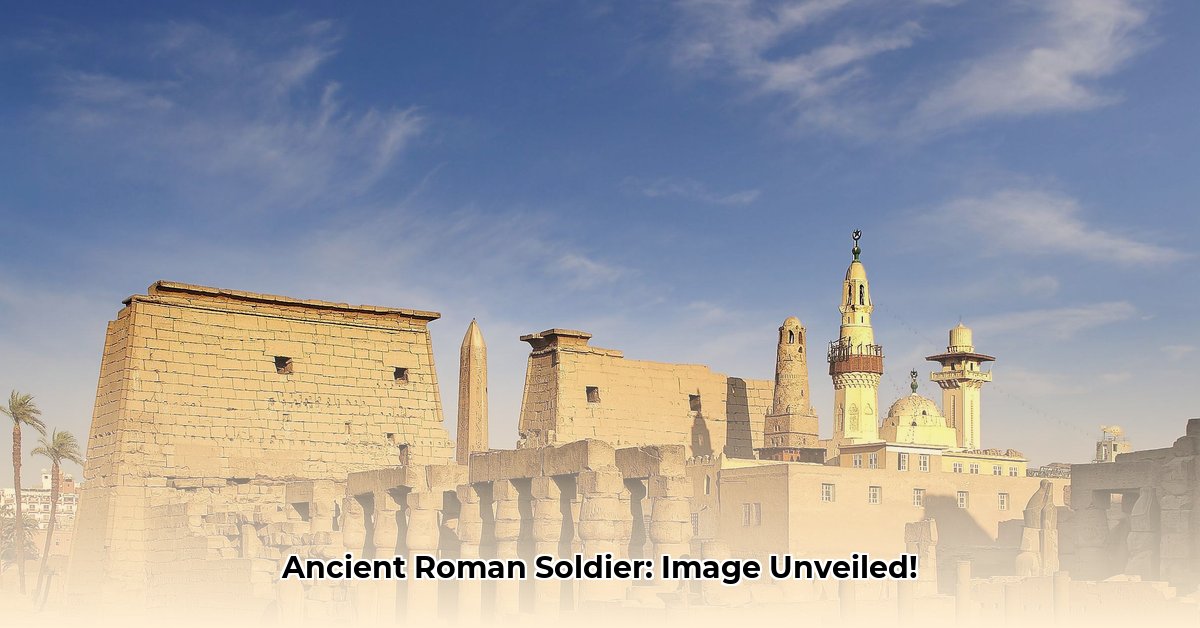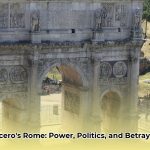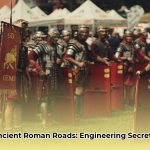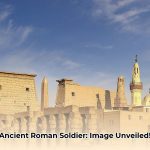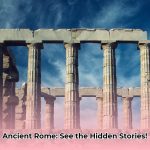Have you ever gazed upon a depiction of an ancient Roman soldier and pondered the deeper narrative it conveys? Far more than a mere figure in gleaming armor, the Roman legionary embodies the formidable ascent of Rome, its foundational principles, and the enduring influence its ideals continue to exert globally. This article embarks on an analytical journey into these potent visuals, deciphering their veiled messages and meticulously distinguishing historical veracity from the often-romanticized narratives we instinctively create. We will navigate the landscape of genuinely authentic visual resources, explore strategies for making the study of Roman soldiers both captivating and profoundly educational, and embark on a virtual tour through magnificent museum displays and dynamic historical reenactments that bring the past to life. Prepare to sift through established facts and uncover the authentic story behind the iconic Roman soldier. Understand the ancient Roman soldier uniform with a helpful guide. Learn more about the uniform’s details.
Deciphering the Visuals: The Ancient Roman Soldier in Focus
Consider for a moment the sheer volume of information embedded within a single image of an ancient Roman soldier. Beyond the polished armor and stoic countenance, these visuals subtly unfold tales of immense power, groundbreaking innovation, and even the relentless daily grind of the Roman military machine. It requires the discerning eye of a historical detective, meticulously assembling fragments from a bygone era to construct a comprehensive understanding.
The Potency of Portrayals: Understanding Roman Soldiers Through Imagery
In our visually saturated world, the image of an ancient Roman soldier is ubiquitous—found across digital platforms, within educational texts, and integrated into popular video games. We encounter a diverse spectrum of representations: meticulously crafted stock photos, imaginative artistic interpretations, and candid snapshots captured during vibrant historical reenactments. Each offers a unique vantage point, a distinct lens through which to view this compelling subject. However, the paramount question remains: does every visual accurately reflect the lived experiences of a soldier in ancient Rome?
A Shared Perception: Common Visual Narratives
As one navigates various online resources and historical literature, a consistent visual archetype frequently emerges. Certain depictions reappear with striking regularity: the proud standard-bearer hoisting his unit’s unique emblem, legionaries poised heroically for imminent battle, the majestic Colosseum frequently serving as an imposing backdrop, and dramatic illustrations of Roman armies executing formidable siege operations. Leading stock image platforms, including Getty Images and iStock, are replete with such examples. This pervasive visual repetition underscores a collective societal understanding of what a Roman soldier embodies. But from where, precisely, does this dominant perception originate, and how accurate is it?
Fact Versus Fiction: The Quest for Authenticity
Herein lies the true intrigue of the historical narrative. While a consistent visual theme undeniably exists, the profound interpretation of these images can diverge significantly from historical reality. Consider the frequently depicted armor: often impeccably polished, seemingly flawless. Was this truly its genuine appearance after weeks of campaigning, or is it a more romanticized, cinematic rendition designed for visual impact?
It is akin to juxtaposing a gritty, unvarnished documentary with a lavishly produced historical drama. Both may be rooted in similar historical events, yet their degrees of artistic license vary dramatically. So, how does one discern historically accurate portrayals—perhaps based on archaeological finds like the lorica segmentata fragments from Corbridge or the intricate details on Trajan’s Column—from purely imaginative constructs?
The Educator’s Imperative: Grounding History in the Classroom
Educators face a considerable yet vital challenge when leveraging such visuals. On one hand, compelling images possess an unparalleled capacity to capture students’ attention, transforming abstract history into a vibrant, accessible narrative. On the other, it is absolutely imperative to articulate the inherent limitations of these depictions. Emphasizing that commercial stock photos and artistic renderings differ fundamentally from actual archaeological discoveries or rigorous scholarly research is crucial. Ultimately, the pedagogical objective is to cultivate genuine historical understanding, not merely a polished, cinematic version of past events.
Essential Practices for Responsible Visual Use in Education:
| Practice | Description |
|---|---|
| Curated Selection | Prioritize visuals sourced from reputable institutions. Opt for images directly supported by archaeological evidence (e.g., actual artifacts, preserved structures) or meticulously documented historical research, rather than generic stock imagery. |
| Comprehensive Context | Always explicitly articulate the limitations inherent in the visuals presented. Discuss whether they represent a contemporary artistic interpretation, a dramatic reconstruction, or are directly substantiated by specific factual evidence such as ancient texts or excavations. |
| Critical Analysis | Actively prompt students to critically analyze these images. Encourage them to question what insights they genuinely offer about Roman soldiers, their daily lives, equipment (e.g., pilum, gladius, scutum), and the broader socio-military context of Roman society. |
| Comparative Study | Present students with a diverse array of Roman soldier depictions from various eras and sources. Facilitate discussions comparing and contrasting these visuals, highlighting stylistic differences, varying levels of accuracy, and prevailing artistic conventions. |
| Resource Integration | Avoid relying exclusively on visual content. Integrate a rich tapestry of learning resources, including academic textbooks, translations of primary source materials (e.g., Caesar’s Gallic Wars, Vegetius’s De re militari), and other media to construct a more holistic historical picture. |
Museums: Immersive Journeys into Antiquity
Museums are increasingly pioneering innovative approaches to historical presentation, deftly merging meticulously preserved historical artifacts with evocative contemporary art to ignite curiosity. Imagine stepping into an exhibition showcasing authentic Roman swords (like the gladius hispaniensis) and helmets (such as the Imperial Gallic or Coolus types) juxtaposed with modern artistic interpretations of soldiers guarding Hadrian’s Wall. This sophisticated approach aims to render the past profoundly relevant and engaging for a heterogeneous audience. The question then becomes: how can we make the lives of individuals who thrived millennia ago feel tangible and profoundly relatable today?
Roman Military Reenactments: Stepping into the Sands of Time
Have you ever been fortunate enough to witness a Roman military reenactment? These events offer an astonishingly immersive and highly educational experience. Observing historically accurate legionaries execute precise formations, hearing the distinct clang of their scuta (shields) as they form a defensive wall, and seeing the disciplined precision of their drills—it is both viscerally thrilling and profoundly enlightening. However, it is vital to remember that reenactments serve as compelling interpretations of history, not absolute, flawless replicas. The meticulously researched costumes, the intricate tactical maneuvers, even the visceral sensation of being amidst a simulated battle—all are inevitably filtered through a modern understanding and are subject to the available archaeological evidence. It is “living history,” yet it remains a carefully curated and passionately performed historical narrative.
Understanding Roman Military Reenactments:
| Aspect | Pros (Benefits) | Cons (Challenges/Limitations) |
|---|---|---|
| Educational Value | Offers a tangible, multi-sensory experience that brings abstract historical facts to life, demonstrating equipment use, formations, and daily routines. Deepens understanding beyond textbooks. | Interpretive Nature: Reenactments are always modern interpretations, aiming for accuracy based on current archaeological and textual evidence, but can never be a perfect replication of the past. Gaps in knowledge, safety considerations, and material availability necessitate some compromise. |
| Engagement & Outreach | Captivates diverse audiences, from children to adults, fostering a connection with history. Encourages further independent research and critical thinking about historical periods. | Potential for Misconception: Without proper contextualization by knowledgeable presenters, viewers might mistakenly perceive reenactments as absolute replicas, overlooking the meticulous research and interpretive decisions involved. This can lead to an oversimplified view of historical complexities. |
| Tactical Insight | Provides practical insights into Roman military methods, such as the effectiveness of the testudo formation or the disciplined use of the pilum (javelin) before engagement, which are difficult to grasp from static images or text alone. | Modern Constraints: Modern safety regulations, limited participant numbers (compared to actual legions), and differences in physical endurance or training methods mean that the feel and scale of ancient combat cannot be fully replicated. The psychological impact of actual warfare is also absent. |
| Research & Preservation | Many reenactment groups are deeply committed to historical research, contributing to the understanding of ancient technologies, crafting techniques, and military practices. Their efforts often support museum exhibitions and archaeological awareness. | Cost & Time Investment: Achieving high levels of historical accuracy in equipment and training requires significant financial investment, skill, and time from participants, making it a niche activity. Recreating authentic materials and historical processes (e.g., forging armor) is a labor-intensive endeavor. |
Tourism: Cultivating the Roman Heritage Experience
The tourism sector masterfully capitalizes on the captivating allure of Roman history. High-quality visuals of Roman soldiers are strategically deployed to draw visitors to significant archaeological sites, from the grandeur of the Colosseum to the remarkably preserved barracks at Housesteads Roman Fort on Hadrian’s Wall. Collaborative initiatives with respected reenactment groups frequently offer immersive experiences, significantly boosting regional tourism and critically aiding heritage preservation efforts. However, this raises an intriguing ethical question: does the transformation of history into a commodity, something to be acquired and consumed, potentially dilute its profound educational value or lead to oversimplification? This is certainly a point worthy of thoughtful consideration and ongoing debate.
Protecting the Past: The Indispensable Role of Archaeology
Long-term, strategic investment in historical preservation is not merely beneficial; it is absolutely essential. Sponsoring archaeological excavations at Roman military encampments, such as those along the frontiers of the Roman Empire, and developing sophisticated digital models of Roman military sites ensures the continuous availability of accurate information while actively engaging the public. We bear a profound collective responsibility to safeguard the finite, tangible remnants of our shared past for the benefit of future generations. Without such concerted efforts, what, precisely, will endure for those who follow?
Beyond the Images: Actionable Insights for Future Engagement
Here is a practical breakdown outlining how diverse stakeholders can effectively utilize these insights to both protect and strategically promote the rich tapestry of Roman military history:
| Stakeholder | Actionable Insight |
|---|---|
| Educators | Diversify visual resources, rigorously vetting their historical accuracy. Explicitly discuss the interpretive nature of artistic and commercial depictions. Cultivate critical thinking skills in students, enabling them to question and analyze historical imagery with informed skepticism. Regularly integrate primary sources alongside visuals. |
| Museums & Archives | Develop dynamic, interactive exhibits that blend authentic artifacts (e.g., actual Roman armor, tools, coins) with cutting-edge digital reconstructions and carefully curated artistic interpretations. Prioritize clear, research-backed labeling and educational programs that illuminate the context and limitations of displays. |
| Tourism Industry | Promote historical sites using high-quality, historically sensitive imagery of Roman soldiers. Forge strong partnerships with reputable historical reenactment groups to offer educational, immersive experiences that adhere to high standards of historical accuracy and respect for the past, avoiding sensationalism. |
| Historical Societies | Champion and organize public outreach programs, lecture series, and workshops that delve into Roman military life, drawing upon the latest archaeological findings. Support local archaeological initiatives and the preservation of Roman-era sites within their regions. Disseminate accurate historical narratives through accessible publications. |
| Preservationists & Archaeologists | Advocate for and secure funding for ongoing archaeological surveys and meticulous excavations of Roman military installations and associated sites. Invest in advanced digital reconstruction technologies to create accurate, publicly accessible models of these sites. Actively share findings through open-access publications and public engagement initiatives to foster deeper understanding. |
By skillfully integrating visually compelling content with rigorously researched insights, we can collectively continue to deepen our understanding and appreciation of this enduring ancient civilization.
How Authentic Are Roman Soldier Reenactments, Really?
Key Takeaways:
- Roman military reenactment meticulously balances the pursuit of historical accuracy with practical considerations, modern safety protocols, and potent educational objectives.
- There exists no singular, universally accepted definition of “authenticity”; it operates on a nuanced spectrum within the reenactment community, influenced by available evidence and interpretation.
- Dedicated reenactment groups, esteemed museums, and forward-thinking educational institutions collectively act as pivotal contributors, shaping the broad public perception and understanding of Roman military history.
- Meticulous research into every facet of equipment—from the intricate design of a galea (helmet) to the construction of a caliga (sandal)—is an indispensable, foundational aspect for any reputable reenactment group striving for historical fidelity.
- Both museums and passionate reenactors fulfill vital, synergistic roles in crafting truly immersive and profoundly educational experiences for diverse audiences.
Decoding the Legionary: Authenticity Under Scrutiny
Have you ever paused to critically consider how accurate Roman soldier reenactments genuinely are? We encounter these captivating displays in museum exhibitions, at iconic historical landmarks, and even in cinematic productions, but to what precise extent does what we observe truly reflect the harsh, complex realities of a Roman soldier’s demanding existence? It is a profoundly nuanced question, and its answer is seldom straightforward; it’s a sliding scale, not a binary choice.
The unwavering pursuit of rigorous historical accuracy undeniably serves as a principal driving force for most serious reenactors. These dedicated individuals commit countless hours to poring over diverse archaeological discoveries (e.g., excavated artifacts from Vindolanda or Pompeii), meticulously scrutinizing ancient texts (like the military treatises of Vegetius or Josephus’s accounts), and consulting extensively with leading historians and classicists. They painstakingly recreate period-appropriate armor (e.g., lorica segmentata for 1st-2nd century CE, chainmail lorica hamata, or scale armor lorica squamata for other periods), authentic weaponry (e.g., the gladius, pilum, pugio), and historically accurate clothing (tunic, sagum, caligae), striving for unparalleled authenticity in every perceivable detail, from the stitching of a tunic to the construction of a shield boss.
But let’s pause for a crucial moment. Is it truly feasible to flawlessly replicate the multi-faceted experiences of a Roman legionary who lived and fought two millennia ago? Can we ever fully bridge the immense temporal, cultural, and experiential gap spanning the 21st century and the profound realities of the ancient Roman world? The candid truth is, likely not. Environmental conditions, diet, the constant threat of disease, the sheer physical demands, and the psychological weight of ancient warfare are inherently difficult, if not impossible, to perfectly recreate.
The Authenticity Spectrum: From Rigor to Relatability
The very definition of “authenticity” itself within reenactment is a hotly debated and multi-faceted subject. Some ardent advocates argue vehemently for an unwavering, unyielding adherence to every fragment of historical evidence, even if it compromises comfort or presentation. Others acknowledge the necessary and pragmatic compromises dictated by factors such as prohibitive cost, modern safety protocols (e.g., minimum distances for weapon demonstrations), strict material availability (e.g., sourcing historically accurate wool or bronze alloys), or the need to convey information effectively to a contemporary audience. It’s an intricate balancing act, with different reenactment groups adopting varying philosophies and approaches to this complex equilibrium.
For instance, certain groups might prioritize the precise use of Latin commands during formations to enhance period immersion for participants. However, this dedication could inadvertently create a linguistic barrier for both new participants and a wider public audience who do not comprehend the language, thus reducing their engagement. Similarly, attempting to recreate historically accurate Roman meals, while academically fascinating, might not appeal to contemporary palates or meet modern health standards if offered to the general public.
Engaging with the Past: The Transformative Power of Reenactment
Despite these inherent and acknowledged challenges, Roman military reenactment offers invaluable avenues for profound learning and deep historical engagement. Museums strategically employ reenactments to imbue their static displays with dynamic life, crafting truly immersive experiences that thoroughly captivate visitors and make abstract concepts concrete. Educational institutions thoughtfully integrate reenactments into their curricula, providing students with a tangible, hands-on comprehension of Roman military tactics, the intricate social structures within the legions, and the day-to-day realities of service. This allows us a precious, albeit interpreted, glimpse into the past.
Consider this profound thought: Perhaps the most significant and enduring value of reenactment does not lie in its flawless, unattainable accuracy, but rather in its remarkable capacity to ignite genuine curiosity, foster deeper independent historical exploration, and stimulate critical thinking. By witnessing a reenactment, we are prompted to formulate new questions, to delve more profoundly into the rich historical narrative, and to develop our own nuanced, informed interpretations. As educators and historical communicators, nurturing this critical historical thinking in students and viewers is profoundly paramount.
The Educator’s Lens: Nuances of Historical Authenticity in Reenactment
| Consideration | Detail and Nuance |
|---|---|
| Equipment Accuracy | Goal: Replicate armor, weapons, tools, and personal effects (e.g., sarcina or marching pack) based on archaeological findings, pictorial evidence (e.g., reliefs, mosaics), and textual descriptions. Nuance: Materials, crafting methods, and wear-and-tear often differ from ancient reality due to modern resources and safety. The goal is representation, not perfect duplication. |
| Tactical Demonstrations | Goal: Accurately showcase Roman military formations (e.g., testudo, orb, wedge), drilling procedures, and combat techniques (e.g., use of gladius in close combat, pilum throwing). Nuance: Safety protocols and limited numbers mean these are carefully choreographed demonstrations, not actual combat. |
| Depiction of Daily Life | Goal: Recreate aspects of Roman camp life, including cooking methods, hygiene, leisure activities, and construction of temporary fortifications (e.g., marching camps). Nuance: Modern conveniences, sanitation standards, and dietary preferences will inevitably influence the authenticity of these portrayals. |
| Social Context & Hierarchy | Goal: Represent the diverse roles and social classes within the Roman army, from the common legionary to the centurion and standard-bearers. Nuance: Capturing the precise social dynamics, discipline enforcement, and psychological pressures of a real Roman army of thousands is a significant interpretive challenge. |
| Interpretation & Pedagogy | Goal: Provide visitors with accurate and informative accounts, explaining the historical basis for the reenactment and acknowledging its limitations as an interpretation. Nuance: Effective communication requires simplifying complex historical details without sacrificing accuracy, ensuring the audience grasps the blend of fact and informed reconstruction. |
Sourcing Authentic Ancient Roman Soldier Images: A Critical Guide
Key Takeaways:
- The expansive digital landscape is regrettably oversaturated with imagery depicting Roman soldiers, a significant portion of which lacks sound historical grounding.
- While commercial stock photo platforms offer unparalleled convenience, they frequently prioritize aesthetic appeal and immediate visual impact over rigorous historical accuracy.
- A sophisticated, critical understanding is absolutely paramount for distinguishing genuinely authentic historical depictions from romanticized, often anachronistic, portrayals.
- Educators, content creators, and digital platforms bear a collective and profound responsibility for elevating the standards of visual accuracy across all published materials.
- It is incumbent upon us, as informed consumers of historical imagery, to critically assess all visuals to actively avoid perpetuating and disseminating historical inaccuracies.
The Allure and the Intricacies of Roman Soldier Imagery
The Roman soldier: an enduring, potent symbol of military power, disciplined order, and expansive territorial conquest. Their iconic image, endlessly reproduced across virtually every digital platform, consistently ignites the human imagination with visions of ancient grandeur. But how much of what we encounter in popular media truly reflects historical reality? Are those gleaming breastplates (like the lorica musculata) and perfectly heroic legionaries genuinely accurate, or are we inadvertently absorbing a sanitized, romanticized, and often subtly incorrect version of history?
The digital realm offers a seemingly inexhaustible, almost overwhelming, supply of images. A rapid online search will instantly yield thousands, if not millions, of pictures portraying ancient Roman soldiers—from detailed illustrations to modern photographs of reenactors. However, the sheer accessibility and volume of these images often conceal a significant, underlying issue: the crucial question of historical authenticity.
Stock Photos: The Paradox of Convenience Versus Accuracy
Prominent platforms such as Getty Images, Shutterstock, Pixabay, iStockphoto, and Unsplash represent invaluable repositories of visual content for a vast array of subjects. A simple quest for “Roman soldier” will inundate you with myriad visual options, ranging from meticulously detailed 3D renders to dramatic cinematic stills. This unparalleled ease of access, while undeniably convenient for immediate needs, is paradoxically a double-edged sword. While providing quick solutions, a substantial portion of these images comprises commercial stock photos, primarily conceived and optimized for broad commercial appeal and general illustrative purposes rather than exacting historical accuracy.
Does this imply that these pictures are inherently flawed or entirely useless? Not necessarily. However, their fundamental objective is not historical fidelity. They prioritize visual attractiveness, dramatic composition, and broad applicability, which can frequently lead to stylized, idealized, and ultimately inaccurate portrayals. Consider the pristine, seemingly unblemished armor, the often exaggerated heroic stances, and the conspicuous absence of the grime, wear, and tear that characterized a soldier’s perpetually challenging reality. The lived experience of a Roman soldier was, in all likelihood, far less glamorous, more arduous, and significantly more physically demanding than typically depicted.
The Critical Details: The Indispensable Role of Context
Herein lies the critical importance of robust context. What crucial information is conspicuously absent, or at best, minimally provided, from these ubiquitous stock photos? Informative, research-backed captions articulating the specific type of soldier depicted (e.g., a legionary equipped for the early imperial period, an auxiliary cavalryman, a centurion), the precise historical period (e.g., Republican, Early Imperial, Late Imperial), and the original, verifiable source of the imagery (e.g., a Roman mosaic from Antioch, a funerary stele, a specific archaeological find) are absolutely vital. Without this essential contextual data, discerning between an accurate, evidence-based depiction and a purely fanciful, artistically licensed one becomes nearly impossible for the average viewer.
Could an average modern viewer, for instance, differentiate definitively between the military kit of a legionary serving during the time of Pompey the Great (late Republic, typically mail armor and simpler helmets) and one serving under Emperor Trajan (Early Empire, often depicted with lorica segmentata and elaborate crested helmets)? Most likely not! And that, precisely, encapsulates the core of the problem: a general lack of discerning knowledge among the public, exacerbated by easily accessible but potentially misleading visuals.
The Educator’s Dilemma: Navigating the Visual Minefield
For educators, this situation presents a genuine and formidable challenge. How does one effectively utilize compelling visuals to engage students and ignite their interest without inadvertently disseminating misinformation or fostering a romanticized, inaccurate view of history? The unequivocal answer resides in the cultivation of rigorous critical evaluation skills.
Instead of passively accepting images at face value, we must actively foster a culture of sustained inquiry, prompting fundamental questions such
